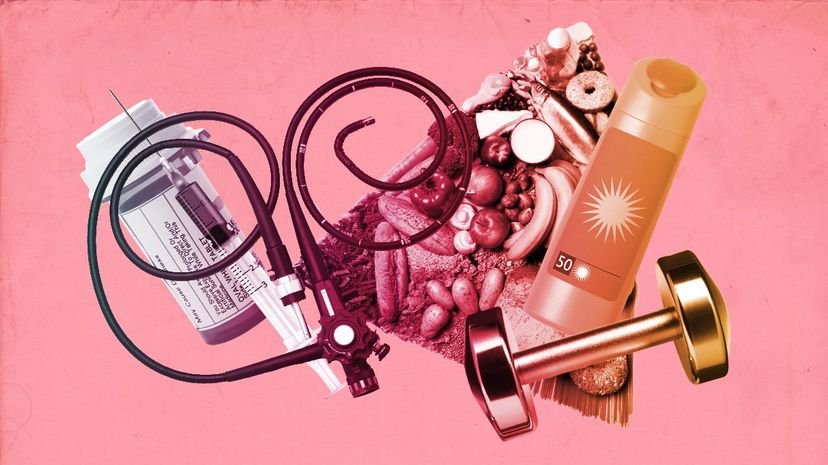
It turns out that it is possible to have too much of a good thing and not enough of something even better. The overuse and underuse of medical services is a global healthcare crisis the medical industry is desperately trying to remedy, as described in a series of papers published by The Lancet. The issue is rampant around the world, with overuse and underuse often occurring side-by-side in varying economies.
The Issue With Overuse
Advertisement
Medical services that are overused are considered more likely to cause harm than good if used inappropriately. "Overuse of unneeded services can harm patients physically and psychologically, and can harm health systems by wasting resources and deflecting investments in both public health and social spending, which is known to contribute to health," the researchers explain in the first paper in the series.
The researchers outlined a number of areas where overuse is commonly reported: medications, screening tests, diagnostic testing, therapeutic procedures (surgery and other invasive procedures), site of care delivery (staying in a hospital when a less aggressive site would suffice) and end-of-life care. Each of these areas are vital, even life-saving when indicated by patient history, symptoms and other specific considerations, but when used willy-nilly the burden is great for both patients (many of whom still lack adequate insurance) and the healthcare system.
Among these, medication overuse is one of the most publicly acknowledged examples, because when prescribed unnecessarily the threat of microbial resistance increases, putting the patient and general population at risk.
Expensive and sometimes traumatic diagnostic tests, like endoscopy and colonoscopy, are also commonly overused, with the U.S. alone reporting an overuse rate of 60 percent for the latter. "If you look at this from a big public health perspective it (too many screenings/tests) doesn't have the payoff," says Philadelphia-based medical malpractice attorney Max Kennerly in a phone interview. "But on a personal level, who wants to be the person who should have had a colonoscopy more frequently and didn't get it?"
End-of-life care is a prime depiction of how overuse of one type of service can cause underuse of a far more appropriate option, like hospice. "In many countries, evidence exists for the overuse of aggressive care for dying patients and simultaneous underuse of appropriate palliative care," the researchers note, adding, "Despite evidence that the majority of people around the world would prefer to die at home, about half die in hospital worldwide, with considerable variation among countries." Futile intravenous nutrition and aggressive, highly unlikely to work chemotherapies that actually cause death quicker, are a couple of the reported efforts often given to terminal patients.
Overdiagnosis and subsequent "labelling" can also be harmful, and not just because patients might be taking drugs they don't actually need. ADHD is one example that is particularly prevalent in high-income countries. "There is scant research on the effect of an ADHD diagnosis on a child's sense of self-esteem and ability to modulate their own behaviour, but the label has been shown to affect teacher's expectations and peer interactions, which can substantially influence a child's self-perceptions," the researchers explain in the study.
Understanding Underuse
If there's an affordable, effective medical service that's likely to improve quality of life available, people should use it, right? In a perfect world, the answer is yes, but roadblocks stand in the way, and they cause higher morbidity, mortality, suffering and disability rates, as a result.
"A common tragedy in both wealthy and poorer countries is the use of expensive, and sometimes ineffective, technology while low-cost effective interventions are neglected," the researchers write.
Known causes of underuse are: lack of access to affordable health care, not enough doctors or other medical resources to meet the demand, doctors who need more training in new techniques and recommendations and general failure by physicians to deliver the appropriate recommended care. Often, patients choose not to access care or decline recommended treatment, largely because of issues like language barriers, stigma, culture, distance and race.
"One major contributing factor to the underuse of both proven interventional and preventative care is the roadblock in communication. The industry is founded upon the model of healthy until proven otherwise," explains Dr. Simon Lorenz, health care technologist and founder of health care messaging app Klara. "The business system of scheduling appointment 'checkups' is, frankly, an administrative nightmare for the everyday individual. The amount of phone tag, back and forth and frustrations with the lack of transparency regarding payments deter people from visiting their doctors."
Often, nonpharmacological options are overlooked in favor of drug therapy, even though the former is cheaper (sometimes even free) at least as effective. "For example, pulmonary rehabilitation, which involves progressive exercise and education, has been shown to reduce hospital re-admissions and deaths for patients with chronic obstructive pulmonary disease by 70%; daily application of sunscreen can cut invasive melanoma rates by 50%; and insecticide impregnated bednets can prevent 50% of malaria cases," the researchers state in the paper.
Striking a Balance
The writers of the series are calling on further research, policy changes and investment to begin to turn the dial on overuse and underuse. "Although global spending on health and medical research is about $200 billion per year, only a small fraction is aimed at better understanding and overcoming the barriers that prevent better uptake of effective interventions, and methods to make them affordable," they explain. "The global health community must focus its attention and resourcing for health policy and health systems work at each of the stages we have outlined."
Some of the changes the authors recommend are restricting reimbursement to health care providers when a test or treatment is being administered to more of the population than really needs it and educating the public and patients more on treatment choices. But a balance has to be struck — the authors point to a study showing that efforts to reduce the number of patients admitted to hospitals with heart failures led to an increase in visits to the emergency room once these patients were discharged.
"The series' final paper, and many reform initiatives, focus the fulcrum of change on the healthcare consumer," emails health care marketing expert Irving Stackpole. "The theory is that given information and a range of option and choices, the health care consumer (patient, client) will make "good" choices.
"The problem with this theory is that there's little or no evidence – other than anecdotal – to back this up," he explains, adding, "The 'consumers' are highly vulnerable ... and their decisions and choices are biased toward the wrong things, e.g., anecdotal praise or criticisms from family friends or other trusted advisers – who may, or may not have good information, and toward the higher-priced providers (cost / quality bias)."
Advertisement

